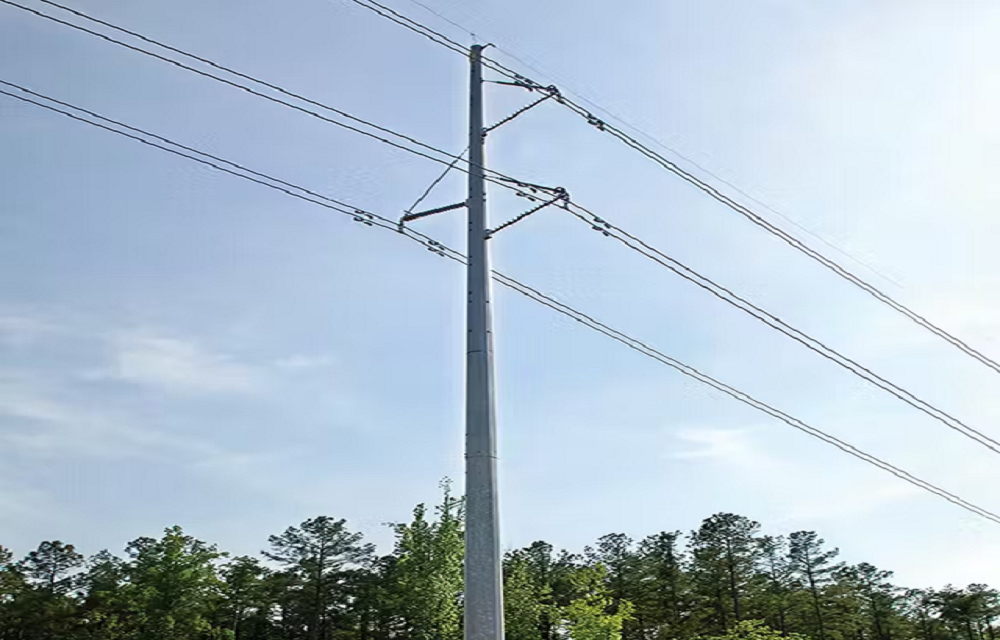Philippine Power Upgrade: China’s Hot-Dipped Galvanized Single Pipe Rods Reshape Island Transmission Networks
2025-04-21
Recently, a 35kV transmission line reconstruction project in an island area of the Philippines was successfully completed, and the first batch of 11-meter single-tube poles made of hot-dip galvanized Q235B steel were officially put into use. This project not only fills the gap of local disaster-resistant power infrastructure, but also provides a new model for power grid construction in tropical island environment with standardized construction process and cross-country collaboration mode.

Technology breakthrough: customized anti-corrosion solutions
The Philippine Islands face multiple erosion from typhoons, salt spray and humidity all year round, and traditional concrete poles are prone to cracking and corrosion of metal parts, resulting in an average annual power outage of more than 50 hours. The deployed monotube poles are made of Chinese standard Q235B carbon structural steel, treated with a hot-dip galvanizing process to form a dense zinc layer on the surface with a thickness of up to 86 microns, which is resistant to corrosion in acidic or alkaline soils with a pH of 4.5-8.5.“The base material is dip galvanized by 430°C high-temperature zinc solution, and the microhardness of the zinc-iron alloy layer reaches 250 HV, far exceeding the ordinary galvanizing process.” Wang Wei, the technical director of the Chinese side of the project, introduced, “The 11-meter height design has undergone hydrodynamic simulation, which ensures the safety distance of the 35kV line to the ground while reducing the wind load to 60% of the traditional iron tower.” Measured data show that the tower can withstand an instantaneous wind speed of 55m/s, equivalent to the level of super typhoon.
Precision construction: 72 hours to complete the standard section erection
1. Geological survey and foundation construction
The construction team used total station for centimeter-level positioning, and for the coral rock geology common on the island, diamond drills were used to cut 1.5m diameter pile foundation holes. The foundation was poured with C35 marine concrete, mixed with 8% silica fume and rust inhibitor to enhance the resistance to chloride ion penetration. The precast concrete chassis is connected to the pole through pre-buried M24 galvanized bolts, and the bolt perpendicularity error is strictly controlled within 2mm/m.
2. Modularized lifting operation
After transporting the monopole to the site, it was installed by a 50-ton crawler crane using the “double lifting point balancing method”, with the lifting points set at 3 meters from the top of the pole and 4 meters from the bottom of the pole. The construction team used dual latitude and longitude instruments for real-time monitoring to ensure that the verticality deviation of the pole was less than 0.3% (i.e., the top of the 11-meter pole was offset by ≤33 mm). The ground bolts were tightened diagonally in three stages, with the torque value gradually increased to 120N-m, and molybdenum disulfide anti-corrosion grease was applied to the threads.
3. Electrical system integration
Cable terminations were installed using cold-shrink technology: after stripping the outer sheath of the 15 cm cable, a 35 mm² copper ground wire was fixed with a constant force spring and sleeved into a silicone rubber sleeve with shape memory properties. The conductor connection uses 300kN hydraulic pliers to crimp the copper-aluminum transition terminal, and the contact resistance after crimping is less than 20μΩ. 3 FD-4 anti-vibration hammers are installed in each phase of the conductor, and the spacing is precisely calculated according to the formula of 0.8D+0.3D×sinθ (D is the diameter of the conductor).
Cross-country collaboration: standards integration and skills transfer
The project innovatively adopts the mode of “Chinese technology + local implementation”, in which the Chinese side provides tower components complying with the GB/T 2694 standard, and the Filipino construction team is responsible for on-site installation. To ensure the consistency of the process, Chinese engineers developed the Tropical Island Construction Manual, which contains 27 key control points, and organized a two-week special training, covering core technologies such as laser calibration and cold-shrinkage terminal installation.
“For the first time in the Philippines, we introduced a concrete entry temperature monitoring system.” Lopez, the project manager of the Philippine side, said, “By transmitting data to the cloud platform in real time, the temperature difference between inside and outside of the concrete during setting is controlled within 25°C to avoid cracks.” The project has trained a total of 82 local technicians, 15 of whom are qualified for International Electrotechnical Commission (IEC) certification.
The successful practice of the Philippine island power grid upgrade project has verified the core value of standardized, disaster-resistant power facilities for sustainable tropical development. q235B hot-dip galvanized single-pipe poles cracked the challenges of typhoons and salt spray by virtue of their scientific design, and pushed the power system from “passive disaster resistance” to “active defense” through modular construction and intelligent operation and maintenance. “Active defense”.
The model of “technology export + local empowerment” has built a new paradigm of cross-border infrastructure cooperation – the deep integration of China’s standardized manufacturing and local construction capacity has cultivated a Philippine technical talent ladder while guaranteeing the quality of the project. Measurements have shown that the breakthroughs in disaster resilience, operation and maintenance efficiency and economy of the new tower have set a benchmark for energy security on the islands.
In the face of global climate change, this type of grid technology, which integrates material innovation and ecological concepts, will become a key support for the transformation of island economies. From single-point demonstration to territory-wide promotion, its technology spillover effect will not only benefit more remote areas, but also promote the “Belt and Road” infrastructure cooperation to greening and digitalization. The silver-gray single-pipe poles are reshaping the symbiotic boundary between energy and nature with the power of science and technology.

Hey, I’m Chunjian Shu
"X.Y. Tower: Reliable, innovative solutions for high-quality towers and electrical equipment with professional service.
